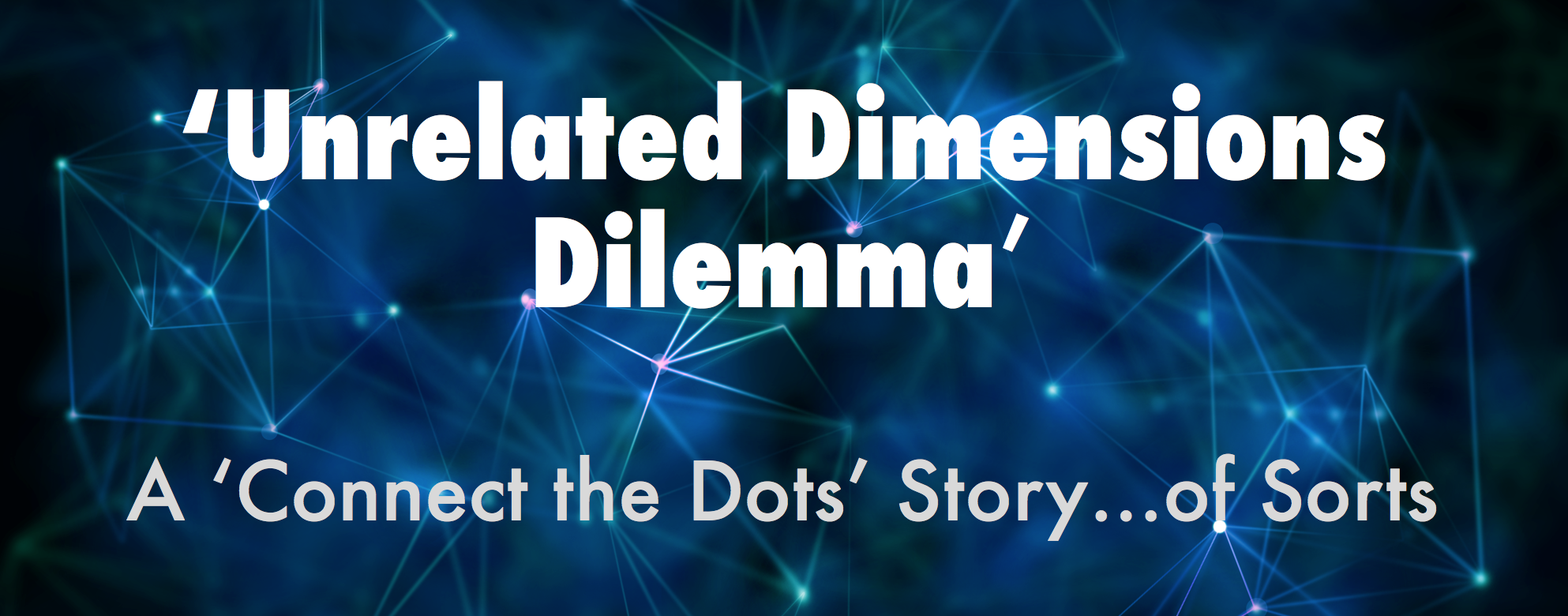Yesterday, Gartner published the 2017 Magic Quadrant for Business Intelligence. The MQ research for BI has been in existence for close to a decade; it is THE document of reference for buyers of Business Intelligence technology.
Gartner Magic Quadrant for Business Intelligence (BI) 2017: The Good, The Bad and The Wookie?!
Topics: Gartner
TECH TALK: Solving the Unrelated Dimension Dilemma. A Connect the Dots Story of Sorts.
Wouldn’t it be great if you could load all of your data from a single file into an Excel pivot table for easy analysis?
Unfortunately, this approach isn’t usually viable when dealing with complex business analytics and big data. Take for example a typical use case found inthe world of healthcare insurance. A large insurance provider has 10s of millions of members, and processes 100s of millions of claims a year. As flexible as Excel is, we all know it won’t handle this volume or velocity of data.
As a result, more and more enterprises store large data sets in big data platforms like Hadoop. And while Hadoop provides a low-cost and performant approach to store and process this information, there is still the challenge of supporting the many types of analytics required on claims and member data sets. But why? Why and how, with all of the advances in technology, can a simple calculation cause so much complexity?
Topics: Business Intelligence, Big Data, olap, BI
Digital transformation is a broad term that has various meanings by application, but in general, it means that more and more of what organizations, people, governments do is happening in computers, mobile devices and networks. As a result, the way things are done is changing, especially in the way things are connected. So in this new world of data flying everywhere, being generated and consumed, where does one stop for a second to take a look at what’s going on?
Topics: Business Intelligence, Big Data, olap, BI, Analytics
Congratulations! Your Hadoop cluster is up and running. Your data feeds work; your team knows how to manage the cluster, and expert users mine the data with Hive, Pig, Spark. But your executives aren’t satisfied. “Where is the business value?” they ask. “Why don’t we see more people using Hadoop?”
Topics: bi-on-hadoop
TECH TALK: BI-on-Hadoop Engine Wars Continue...Everybody Wins
Just this week, AtScale published the Q4 Edition of our BI-on-Hadoop Benchmark, and we found 1.5X to 4X performance improvements across SQL engines Hive, Spark, Impala and Presto for Business Intelligence and Analytic workloads on Hadoop.
Bottom line, the benchmark results are great news for any company looking to analyze their big data in Hadoop because you can now do so faster, on more data, for more users than ever before.
While this blog provides a high level summary of our findings, you can access the full Q4 2016 Edition of the BI-on-Hadoop Benchmarks here, and also listen to our webinar replay discussing this in more details here.
Topics: Hadoop, Business Intelligence, spark, hive, bi-on-hadoop, Big Data, impala, presto
Google the word “CDO” today and your search will mostly results return articles about the “Chief Digital Officer”. However, if you came to this blog, you’re probably looking for guidance on the other title this acronym refers to: “The Chief Data Officer”...
Topics: Hadoop, Business Intelligence, Big Data, Chief Data Officer
We started AtScale because we believe that everyone should be able to use all data for all their decisions. We believe that people should have unencumbered and secured access to information, work with data of all shapes, at lighting speed and in the tools they are already familiar with like Tableau and Microsoft Excel.
Topics: Hadoop, Business Intelligence, Big Data, hortonworks
OLAP, MOLAP, ROLAP? Why Should BI Care? Which Should You Choose?
Since the 1980s, the world has been using OLAP technology to provide a business interface to analyze data stored in traditional ERP and CRM systems. As the demand for insights increased, MOLAP and ROLAP became key technologies.
With all of the different OLAP options out there, you may wonder which one can actually help you achieve your big data strategy. Which strategy is most suitable for your Hadoop environment?
Topics: Hadoop, Business Intelligence, Big Data, molap, olap, rolap
Research shows that the average enterprise has at least 6 to 10 Business Intelligence tools. Microsoft Excel, the world's most prevalent analysis tool is used by 1 Billion users.
Other companies like Tableau, Qliktech, MicroStrategy or Business Objects have had great success too.
However, there is one key issue with a heteregeous BI environment: each tool uses a different protocol so data has to be customized to work with each BI tool.
For instance, Excel uses MDX and Tableau prefers SQL. What if your company uses new tools like Looker or even open-source tools like Apache Zeppelin?
How can your deliver one version of the truth to all users, regardless the tool they use? This post helps you get there.
Topics: Hadoop, Business Intelligence, Big Data
Topics: Hadoop, Business Intelligence, Big Data










